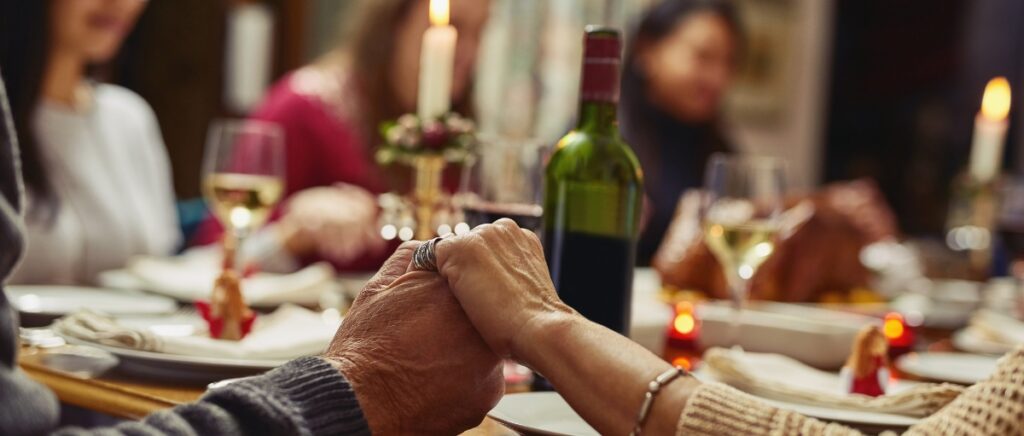What if you could attend your own funeral? It may sound like a far-fetched idea, but for a growing number of people, living funerals are becoming a meaningful way to celebrate life and love before death.
A living funeral, also known as a pre-funeral, living memorial service, or living wake, is a ceremony held for someone who is still alive, often in the face of a terminal illness or advanced age.
Unlike a traditional funeral, the guest of honor is present and can participate in celebrating their life and legacy.
While the concept may be unfamiliar to some, living funerals have roots in cultural traditions worldwide. In recent years, they’ve been gaining popularity in Western countries as attitudes towards death and dying begin to shift.
Since 2020 and the COVID-19 pandemic, 37% of Americans have changed their views on funeral arrangements. As the baby boomer generation ages, more and more people are looking for ways to take control of their end-of-life experience and leave a lasting legacy.
What is a Living Funeral?
A more hopeful term for what has been known as a “pre-death funeral,” the term “living funeral” may be relatively new, but the concept has deep roots in various cultures worldwide. In Japan, the practice of seizensō, or “funeral while alive,” has been gaining popularity since the 1990s. Seizensō allows elderly individuals to take control of their end-of-life arrangements and alleviate the burden on their family members.
These tribes have long-standing traditions of honoring their dying loved ones with end-of-life ceremonies that involve:
- Repairing relationships and making amends.
- Distributing family heirlooms.
- Sharing traditional foods and prayers.
These rituals provide an opportunity for the dying individual to find peace and closure while also allowing their loved ones to express their love and gratitude.
The Growing Popularity of Living Funerals
In recent years, living funerals have also gained traction in Western countries. There are several reasons behind this increased interest:
- An aging population: As the baby boomer generation reaches their later years, more people are confronting their own mortality and seeking ways to take control of their end-of-life experience.
- Shifting attitudes towards death: Many people are moving away from traditional, somber funerals and looking for more personalized, celebratory ways to honor their loved ones.
As more people learn about the benefits of living funerals, both for the honored individual and their loved ones, this trend is likely to continue growing. In the next section, we’ll explore those benefits in more detail and hear from people who have experienced the power of living funerals firsthand.
The Purpose of Living Funerals
Living funerals serve a unique purpose, offering benefits for both the honored individual and their loved ones. For the person being celebrated, a living funeral provides an opportunity to:
Hear tributes and expressions of love from friends and family.
- Share their thoughts, feelings, and final wishes.
- Express gratitude for the love and support they’ve received throughout their life.
- Find a sense of closure and peace as they face the end of their life.
In addition to these emotional benefits, living funerals can give the honored individual a sense of control and empowerment during a challenging time. This life-planning event allows friends and family to celebrate and honor a person’s life while they are still alive, creating meaningful memories together.
Benefits for Loved Ones
While living funerals are primarily focused on the honored individual, they also offer significant benefits for family and friends. Attending a living funeral ceremony gives loved ones the chance to:
- Express their love, appreciation, and gratitude directly to the person they are honoring.
- Share cherished memories and stories highlighting the honored individual’s impact on their lives.
- Find a sense of closure and healing by saying goodbye in a meaningful way.
- Receive comfort and support from others who are also grieving and celebrating the lives of their loved ones.
Living funerals can also help to reduce the burden on family members who might otherwise be responsible for planning a traditional funeral. By taking care of the details and arrangements in advance, the honored individual can alleviate some of the stress and decision-making that often falls on loved ones during a difficult time.
A Meaningful Celebration for All
Ultimately, living funerals offer a unique opportunity for the honored individual and their loved ones to come together in a meaningful celebration of life.
Living funerals can provide comfort, healing, and a sense of connection during a challenging time by focusing on love, gratitude, and shared memories.
Elements of a Living Funeral
While each living funeral is unique, there are some common elements and activities that many of these celebrations include. Some key components of a living funeral may consist of:
- Sharing memories and tributes: Guests are often invited to share stories, memories, and expressions of love and appreciation for the honored individual. This can be speeches, letters, or even pre-recorded videos.
- Music and creative expressions: Many living funerals incorporate music, whether through live performances, meaningful recordings, or group singing. Other creative elements, such as art displays or photo slideshows, may also be included.
- Symbolic rituals: Some living funerals include symbolic gestures or rituals, such as candle lighting, bell ringing, or the release of balloons or butterflies. These acts create a sense of unity and provide a meaningful way to honor the individual.
In addition to these elements, living funerals may also include more intimate, personal touches, such as the honored individual’s favorite foods. These decorations reflect their interests and personality or the involvement of close family members in the planning and execution of the event.
Embracing Life and Love in the Face of Mortality
In a society that often shies away from discussions of death and dying, living funerals offer a powerful way to confront our mortality with love, gratitude, and celebration. We can find a sense of peace, purpose, and connection that might otherwise be by choosing to honor our lives and legacies while we are still here lost.
Whether you are facing a terminal illness, advancing in age, or simply wanting to celebrate your life and relationships, a living funeral may be a meaningful option to consider. By gathering your loved ones, sharing your stories and wishes, and creating lasting memories, you can ensure that your final farewell is filled with love, joy, and appreciation for your life.
As more people embrace the concept of living funerals, we may see a shift in the way our society approaches death and dying.
Living funerals focus on celebration, connection, and the enduring power of love, helping us find meaning and beauty in even the most challenging moments of our lives.
Sources
Oxford Academic. (2011). California scholarship online. Retrieved from https://academic.oup.com/california-scholarship-online/book/15799/chapter-abstract/170632284Choice Mutual. (2021). Funeral preferences survey. Retrieved from https://choicemutual.com/blog/funeral-preferences-2021/
Medium. (2024). Saying goodbye before going: The ingenious idea of living funerals. Retrieved from https://medium.com/@SkullandStone/saying-goodbye-before-going-the-ingenious-idea-of-living-funerals-678f560f72f0
The Guardian. (2024). Five people’s stories of a living funeral. Retrieved from https://www.theguardian.com/society/2024/jan/28/i-didnt-realise-i-was-so-loved-five-people-stories-of-a-living-funeral











